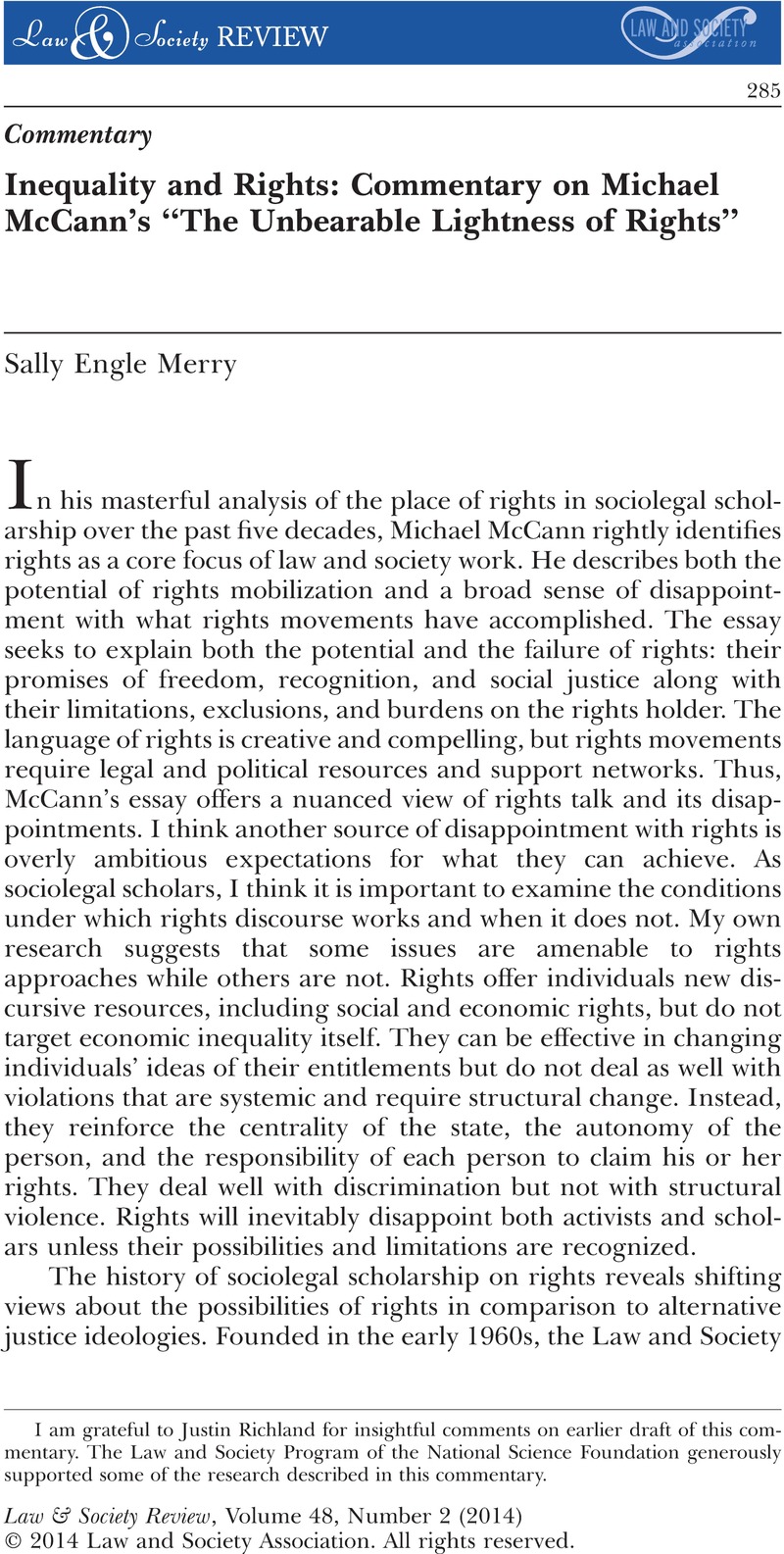Crossref Citations
This article has been cited by the following publications. This list is generated based on data provided by Crossref.
Kemp, Adriana
and
Kfir, Nelly
2016.
Mobilizing Migrant Workers’ Rights in “Non-immigration” Countries: The Politics of Resonance and Migrants’ Rights Activism in Israel and Singapore.
Law & Society Review,
Vol. 50,
Issue. 1,
p.
82.
Kfir, Nelly
and
Kemp, Adriana
2016.
Struggling between Routine and Emergency: The Legalization of Migrants and Human Rights Activism in Israel.
Critical Sociology,
Vol. 42,
Issue. 6,
p.
877.
Karsoho, Hadi
Fishman, Jennifer R.
Wright, David Kenneth
and
Macdonald, Mary Ellen
2016.
Suffering and medicalization at the end of life: The case of physician-assisted dying.
Social Science & Medicine,
Vol. 170,
Issue. ,
p.
188.
Gibson-Graham, J. K.
2016.
The Palgrave Handbook of Gender and Development.
p.
359.
Durlak, Paul R.
2017.
Disability at work: Understanding the impact of the ADA on the workplace.
Sociology Compass,
Vol. 11,
Issue. 5,
Liu, Jianhong
Travers, Max
and
Chang, Lennon Y. C.
2017.
Comparative Criminology in Asia.
p.
185.
Boutros, Magda
2018.
A Multidimensional View of Legal Cynicism: Perceptions of the Police Among Anti-harassment Teams in Egypt.
Law & Society Review,
Vol. 52,
Issue. 2,
p.
368.
Liu, Jianhong
2018.
The Palgrave Handbook of Criminology and the Global South.
p.
61.
McCann, Michael
2020.
Sally Engle Merry: A Deeply Appreciative Remembrance.
Law & Society Review,
Vol. 54,
Issue. 4,
p.
858.
De Munck, Bert
2021.
Equality.
p.
103.
Boutros, Magda
2022.
Legal mobilization and branches of law: Contesting racialized policing in French courts.
Law & Society Review,
Vol. 56,
Issue. 4,
p.
623.
Tait, Kira
and
Taylor, Whitney K.
2023.
The Possibility of Rights Claims-Making in Court: Looking Back on Twenty-Five Years of Social Rights Constitutionalism in South Africa.
Law & Social Inquiry,
Vol. 48,
Issue. 3,
p.
1023.
Knox, Michelle
and
Wagg, Adrian
2023.
Institutional Resistance to Medical Assistance in Dying in Canada: Arguments and Realities Emerging in the Public Domain.
Healthcare,
Vol. 11,
Issue. 16,
p.
2305.
Tejani, Riaz
2024.
Calabresi’s invite: bridging Law & Society and Law & Economics through “situated valuation”.
Law & Society Review,
Vol. 58,
Issue. 4,
p.
635.



